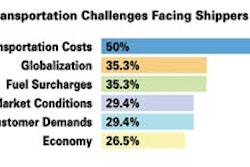
By Edna Conway
The ultimate culprit standing in the way of greener supply chains in the electronics industry is complexity. It's not a matter of good intentions. Or even expense. It's that our industry is characterized by:
- Extended supply chains where specialized partners often handle much of the production.
- Global operations and markets, faced with regional and unaligned regulations.
- Complex product bills of materials (BOMs) and fabrication requirements, laced with demand for configurability to order.
Going green is stacking up to be a daunting task. So, why bother? As long as we're complying with applicable environmental requirements, why care about additional green gains?
Part of the answer is rooted in leadership and responsibility. Through product and business practice innovation we have a unique opportunity. Together, we can influence, and perhaps even assure, a new age of information exchange through environmentally sound platforms and solutions.
The other part of the answer is much more self-serving. At Cisco we believe green is good for business. Across geographies and market segments, customers are becoming increasingly concerned about the environment. And these same customers are demanding that the companies with whom they do business help them reach their green goals by reducing the impact of operations and products on the planet.
The future is clear: Even if we might be tempted to use complexity as an excuse for inaction, our customers won't let us get away with it for long. But where should the green journey begin within the complex matrix that makes up our IT industry supply chains?
Our experience at Cisco has convinced us that putting a framework in place to simplify this complexity not only is achievable but can serve as the catalyst for driving meaningful change. This framework consists of five fundamental elements:
1) Set Your Vision: Where Do You Want to Go?
Be clear on what you'd like the end game to be. Don't limit yourself to what's feasible in a year or two. Rather, think long term; the planet will be here long after us, if we do this right.
Ask your team, other stakeholders in your company and your partners for their input about what the future could look like. Involving them in defining your vision will make the bumpy road of change a smoother ride. Inevitably, we all must accept the tradeoffs essential to realizing a green supply chain vision.
For Cisco, our supply chain goal is to ensure that all of our products can be sourced, manufactured and sold anywhere, any time, in a socially responsible manner.
2) Identify Your Priorities: Where to Start?
Any green framework must be built on a foundation of compliance with applicable regulations. At the next stage, examining your end-to-end supply chain is critical. Start by identifying where your supply chain is leaving the greatest footprint, since the opportunity for driving the greatest positive change lies there.
After evaluating Cisco supply chain processes and talking with our contract manufacturing partners, suppliers and outside experts, we singled out what we refer to as our "Five Big Impactors." Addressing these factors serves as the unifying focus behind our supply chain sustainability programs. We still have a long way to go, but let me share some examples of how we're tackling each of these Big Impactors:
- Carbon Emissions
— Designing lighter-weight packaging to reduce transportation-associated emissions, and embedding transportation efficiency into route planning.
- Energy Availability & Use
— Embedding "green gates" into new product introduction (NPI) and green requirements into our own product design methodology, as well as those of our OEM/ODMs. "Green gates" are checkpoints in the product development process that ensure that the Impactors have been evaluated. For example, a "gate" that establishes a checkpoint to examine energy use and power reduction design alternatives precludes further development without this critical Big Impactor being identified, worked and fully addressed.
- Water Availability & Quality
- Land Use/Waste
- Hazardous Materials
3) Embrace Key Principles: How to Execute?
We identified two principles as absolutely vital to our meaningful progress:
- Take a holistic approach. If you fail to consider your entire supply chain fair game for opportunities to reduce whatever you may identify as your Big Impactors, you'll limit the potential for change. At Cisco, we're taking a hard look at everything from product design and evolution to sourcing, fabrication and packaging, together with distribution and recycling/reuse.
Don't forget to apply the holistic approach internally as well. Cisco established an EcoBoard, with representatives from nearly every corporate function, including Engineering, Government Policy, IT, Internal Operations, Sales and Supply Chain. It's proven invaluable to ensure that we are aligned in our goals and methodologies at the executive level and across the company.
- Document It. Particularly for virtual supply chains such as Cisco's, documenting your goals and then documenting your progress are fundamental. Cisco's Supplier Code of Conduct, while designed to allow suppliers to comply in flexible ways, provides the foundation for what drives our actions. Our goals and expectations will not change. This clarity allows us to then leverage industry alliances, such as the Electronic Industry Citizenship Coalition (EICC), and supplier innovation to achieve those goals. It is only after we and our suppliers know where we are going that specific action to address the Big Impactors can be tackled effectively.
4) Collaborate, Collaborate Again and Then Do It Some More: Ask, Listen and Learn
Turn your extended supply chain into an asset. Get your partners or customers involved. Tap their expertise. Listen to their ideas.
Many of our partners have long operated in global locations where environmental impacts are both varied and substantial. Leveraging their experience and keeping business efficiency in mind, we developed a comprehensive global battery specification unifying the best practices in dealing with batteries from around the world. This practical opportunity for change successfully allowed us to collectively alert end-users to recyclability, reduce waste, expand battery take-back and have a positive impact on batteries' hazardous materials content.
Our customers' firsthand experiences with our products can also be important sources of green innovation. For instance, one of our major enterprise customers challenged us to help them meet their goals for reducing waste. Collaborating to understand that particular customer's use of Cisco products, we created a dense-wave packaging model aligned with their needs to access and deploy our products while dramatically reducing packaging waste. The result? A single container for multiple product units made of easily recycled materials with 75 percent less packaging material. A win for both of us.
5) Drive Standards: Accelerate Change
Because many of us in the electronics industry share suppliers and manufacturing partners, by agreeing on commonly held, core principles and methodologies, we can create the standards needed to drive down the costs of going green and shorten the time-to-benefit for all parties — OEMs, manufacturers, suppliers, distributors and customers.
For instance, as a member of EPA Climate Leaders, we are utilizing widely adopted methods for calculating carbon emissions. And by working with other members of EICC to set common standards for and optimize supplier audits, Cisco is able to selectively leverage EICC supplier audits to measure supplier success, reducing the burden of time and expense on both Cisco and our suppliers.
Closing Thought
The cost of environmental inertia is rising quickly. As daunting as the complexities are that we face in the IT industry, they also present us with opportunities. Opportunities to leverage supply chain networks as sources of innovation. Opportunities to leverage our own technologies as catalysts for change. Opportunities for the industry to exercise leadership and make a substantial contribution to what may well be the most pressing set of issues of our time.
About the Author: Edna Conway is senior director, Advanced Compliance and Social Responsibility, Global Supply Chain Management at Cisco Systems, Inc. www.cisco.com.

















![Pros To Know 2026 [color]](https://img.sdcexec.com/mindful/acbm/workspaces/default/uploads/2025/08/prostoknow-2026-color.mduFvhpgMk.png?ar=16%3A9&auto=format%2Ccompress&bg=fff&fill-color=fff&fit=fill&h=135&q=70&w=240)

